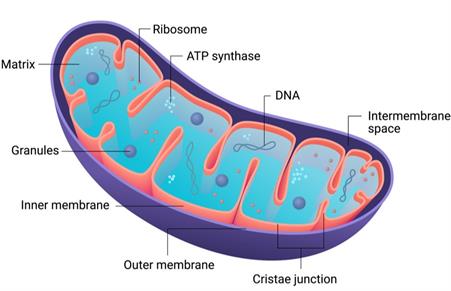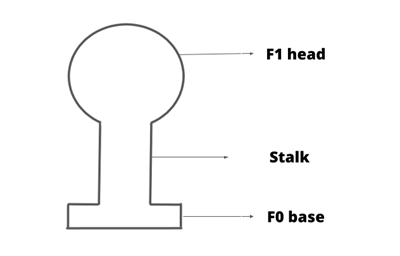PDF chapter test TRY NOW
In the previous theories we have discussed about ATP (Adenosine tri phosphate). From that we know that cells cannot obtain their energy directly from the glucose. It can use energy only in the form of ATP (energy currency of the cell). This conversion of glucose into ATP molecules is done by the cell organelle mitochondria.
Mitochondria:
Kolliker first observed these in \(1857\) as granular structures in striated muscles. As mitochondria (singular: mitochondrion) are the organelles which generate ATP the are known as the power houses of the cell. The size of these organelles varies from 0.5 to \(2.0 µm\) in diameter.
Composition of mitochondria:
The mitochondria comprises of \(60-70%\) protein, \(25-30%\) lipids, \(5-7%\) RNA and small amount of DNA and minerals.
Structure of mitochondria:

Internal structure of mitochondria
Mitochondrial membrane:
- The mitochondria is a double membrane structure comprising the outer and inner membranes, which are \(60-70\)Å thick.
- The outer mitochondrial membrane is a freely permeable smooth membrane as it allows the passage of small molecules. It consists of enzymes, proteins and lipids. It has protein molecules known as porins, which form channels and enable the movement of ions into and out of the mitochondrion.
- The inner mitochondrial membrane is a semipermeable membrane that controls the flow of materials in and out of the cell. This membrane is rich in enzymes and carrier proteins, and it contains \(80%\) of the total mitochondrial lipids and proteins.
.
Cristae:
The inner mitochondrial membrane is deeply folded into cristae, which are finger-like projections. The surface area of the mitochondria is increased by these structures, which also house a number of enzymes.
Oxysomes:
The inner mitochondrial membrane contain small rounded bodies called F1 particles or Oxysomes. These appear like minute regularly spaced tennis rackets and play a prominent role in the ATP synthesis.

Matrix:
The mitochondrial matrix is a complex mixtures of proteins and lipids. The enzymes present in the mitochondrial matrix are the ones involved in the Krebs cycle, mitochondrial ribosomes (70S), tRNAs and mitochondrial DNA.
